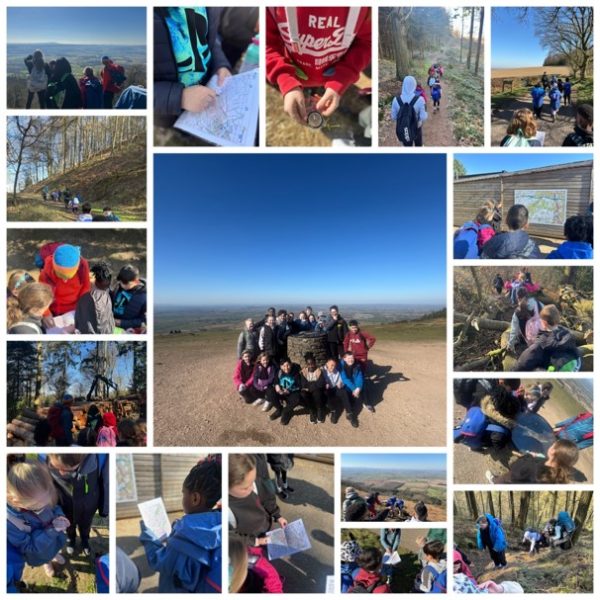We recently went on an exciting geography fieldwork day to The Wrekin, where we applied key geographical skills in a real-world setting. Using maps and compasses, we navigated our way up the hill, developing our understanding of route planning, spatial awareness and map-reading skills. Along the way, we used simple compass directions, grid references, and map symbols—key elements of KS2 geography—to track our progress and find our way to the summit.
As we climbed, we carried out observational fieldwork, recording key physical and human features of the landscape. We identified natural landforms, such as slopes and valleys and discussed how the environment has changed over time. We also took time to observe the local wildlife, spotting a kestrel soaring overhead and examining fascinating fungus spores, helping us understand more about habitats and ecosystems.
In addition to studying the natural landscape, we explored the impact of human activity, observing purposeful logging operations taking place. This led to discussions on land use, sustainability and how people influence and shape the environment—an important part of understanding geographical change.
The day was a fantastic opportunity for us to develop key fieldwork skills, ask geographical questions, and interpret our surroundings, all while enjoying a challenging and rewarding outdoor adventure.
